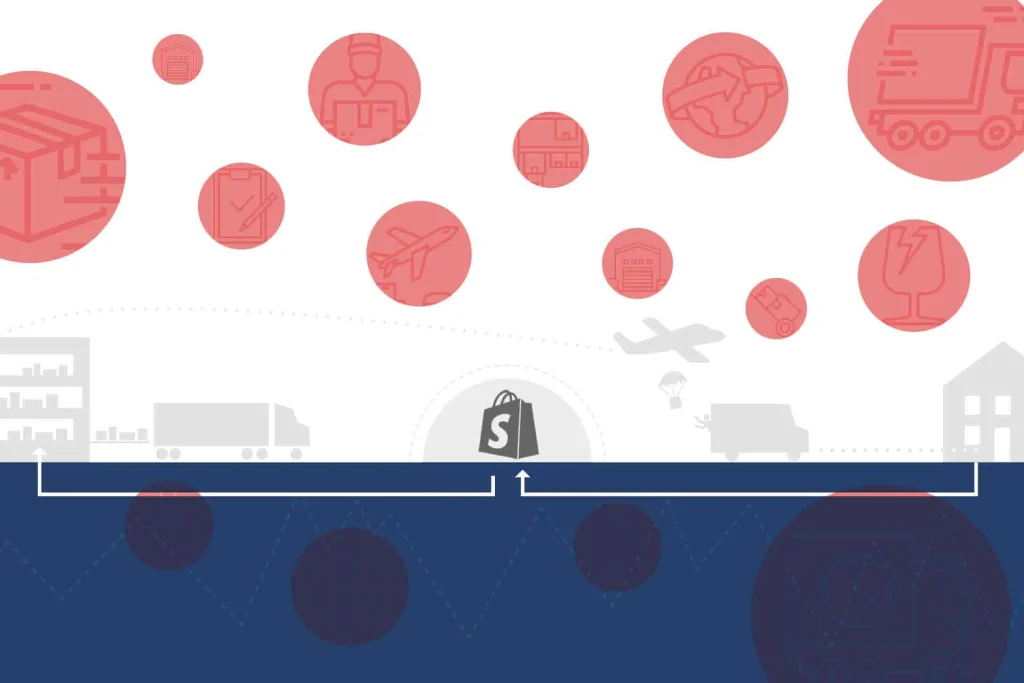10 Benefits of Using a 3PL for Shipping and Returns

Is it time to start using a 3PL (Third-Party Logistics provider) to handle your logistics and reverse logistics?
You have ten seconds to answer this question. Ready? How much warehouse space will you need in the next 12-24 months?
If you can answer with 100% certainty how many additional cubic feet of warehouse (or basement) you’ll need to store your ever-growing inventory, than this article is not for you – because you don’t exist.For those of you living in a world of analysis paralysis trying to determine if your Shopify store is going to continue to grow by X% this year, if that new line is going to make a splash, or if purchasing that second packing station and hiring Hank may have been a mistake, then this post is for you.
Don’t have time to read? Download the 3PL Benefits infographic
What is a 3PL?
A third-party logistics company (3PL or TPL) gives your business the ability to outsource its distribution and fulfillment to a third-party, who will handle the operations, warehouse, and transportation aspects of your business.
Not to be confused with dropshipping: the practice in which a business sells items that are already being fulfilled by another company, typically the manufacturer. Instead, 3PLs are dependent upon the merchandise your team manufactures or orders.

Why use a 3PL?
Imagine: Your killer products, your unique packaging, and practically none of your time spent overseeing how they are received, distributed, and, unfortunately, returned. Here are 10 benefits of outsourcing your Shopify logistics to a 3PL.
1. Scalability
Do you know how much warehouse space you’re going to need 6, 12, 18 months down the line? It’s a complicated question that only grows more complex as you begin to factor in your business’s growth, challenges, staffing, and demand for inventory.
If your sales triple next quarter, what would it take for your business to accommodate that kind of explosive growth? Say you’re sales triple in volume, it is likely you’ll need:
- 3x the storage space. That means either expanding within your current warehouse or, if that is not an option, an expensive moving to a larger location.
- 3x the workforce to package and ship your orders on time means you’ll have to go through the headache of hiring and training more staffers
- 3x the shipping volume? Why should you continue to pay the same rate to your shipping provider, you’ll have to go through the process of renegotiating your rates
Now imagine the inverse, your sales drop by 30% due to unforeseen circumstances and you’re left with a warehouse full of merchandise that isn’t moving. Perhaps you can liquidate or return the excess but you’re still left holding the bag on that extra warehouse space.
That’s an expensive pill to swallow – but to make matters worse you have employees who, by no fault of their own, have nothing to work on now. That outcome is rough.
Using a 3PL takes some of the guesswork out of the inevitable expansion and contraction of businesses by allowing flexibility as you continue to scale or when you hit a bump in the road. Need more space? It’s there. Need less hands on deck to pick and pack? Consider it done.
3PLs give you the opportunity to comfortably scale you business while mitigating some of the financial risks.
2. Affordability
3PLs have competitive rates aimed at lowering your companies overhead by charging transactional fees based on how much you are using their service. Don’t be fooled by the convenience. Finding the right 3PL can be a tricky matter and you need to do your due diligence on your end to ensure you’re striking a deal that will be financially beneficial for your store.
3PLs charge fees for a variety of the services they provide:
- Set Up – cost to cover the initial planning and transition of your account. This can sometimes pertain to transporting your current warehouse to its new location within a 3PL’s network.
- Minimums – a guaranteed rate the 3PL will collect if your usage falls below an agreed upon level
- Transportation – costs for shipping from your vendor to your 3PL
- Receiving – cost for receiving and counting
- Warehousing – cost of the cubic spaced used to store your merchandise
- Pick and Pack – cost for each order pulled from inventory and packaged for shipping
- Shipping – cost to get the package from your 3PL to your customer
- Kitting – cost to combine certain skus in a specific fashion ie a curated mystery box
- Value added services – cost for additional services that can include tasks like bagging t-shirts, building furniture that was shipped flat, stickering, packaging, and almost anything else that you are currently doing in house.
There can be a lot of different fees to consider. Most 3PLs will work with you to find the optimal rate for operating your business. Remember, it is a long term relationship and neither side benefits from turnover. Keeping you for a longer time at a lower cost is the formula that keeps the 3PL in business.
Think of what you’re avoiding in warehouse leases, warehouse insurance, health insurance, benefits, and management time.
3. Reliability
Outsourcing your warehouse can be nerve-racking. How could a stranger who hasn’t been immersed in your brand excel at distributing it? Because they’re professionals and that is what you get when you go with a 3PL: a team of logistics experts who own the space of shipping and fulfillment.
According to a recent study 91% of the businesses believed their relationship with their 3PL was positive and successful. 89% believed the use of 3PLs had contributed to improving their service to customers.
Take a deep breath. 3PLs are seeking to build long term relationships with companies because that is how they stay in business. Accountability and reliability are paramount to nurturing the partnership with your brand.
4. Accountability
Everything that happens to your merchandise within a 3PL is documented and available for review so you can see exactly what it is that you’re paying for. If an order was placed in your store at 3:45 PM, you’ll be able to tell exactly when your 3PL picked, packed, and shipped that item. Giving your incredible insight into their workflow and proving their accountability when something goes wrong.
5. Speedy Logistics
Amazon is able to get their package to your front door in under 24 hours partly because they have strategically located warehouses all across the world.
What if you weren’t only shipping from Dayton, Ohio? Instead your orders were departing from LA, Denver, Chicago, Atlanta, New York, and even overseas. Most 3PLs are not a single warehouse location but rather an interconnect network spread across the world.
Imagine what shaving a few days off of shipping could do for your customer satisfaction.
6. Staffing Pains
Interviewing, hiring, and managing an operations workforce is a full-time job, one you may not have the bandwidth, budget, or acumen for. Utilizing a 3PLs staffing rather than your own saves you financially in terms of wages, healthcare, and other benefits and it also insulates you from dealing with absences, injuries, no-call no-shows, quitting, firing, and the other drama that comes with managing a warehouse.
Instead, you are guaranteed to have your products received, picked, packed, and shipped on time without ever concerning yourself with that matter.
7. Processing Returns
Getting orders out the door is one things – but receiving them back is a huge logistical hurdle. With 30% of all merchandise ordered online being returned it is important to have a streamlined reverse logistics workflow whether you’re using a 3PL or self-fulfillment.
3PLs are more than capable of owning the manual returns and exchanges process used by smaller Shopify stores. However, many stores and 3PLs are choosing to integrate with ReturnLogic to reduce friction in their reverse logistics channel.
ReturnLogic easily integrates with a variety of 3PLs, most notably RubyHas and Bergen Logistics, to streamline return label distribution, return disposition, exchanges, and collecting actionable analytics aimed at reducing returns.
8. Networking
Working with a third-party logistics company can expose your business to a variety of new opportunities by way of association including shipping discounts, volume based discounts from manufacturers, and quicker distribution through warehousing networks.
9. Value Added Services
Think that your business has too many complexities for a 3PL to handle? Think again. 3PLs are equipped to handle everything from packaging and product assembly to kitting and bagging, preparing your products exactly how you intend them to reach their final destination.
10. Time to Focus
You likely didn’t get into ecommerce so you could worry about logistics. Your product and your data are the king and queen of your operation and anything that detracts from those two things is detracting from your business as a whole.
Outsourcing your operations can free up time needed to focus on product development, customer feedback, forecasting, and the other tentpoles that will continue to drive your business.
Using a 3PL is not for everyone
If you enjoy managing operations, have access to affordable warehouse space, or prefer the ability to keep a close eye on all aspects of your business, then you’ll probably continue using self-fulfillment. And that is fine if you believe that is what works best for your business.
What does your future hold?
Choosing a 3PL is not a decision that can be taken lightly. The flexibility and cost savings only come after in-depth research into which 3PL is right for your needs.



